Orange-scented thyme and chocolate mint are close runners-up, but citrus basil is my favorite dual-flavor herb to grow in the garden.
The standards for what makes an herb qualify as citrus basil are relatively relaxed, but the category generally includes different types with sweet-tart, citrus-flavored leaves and citrus-scented blooms.
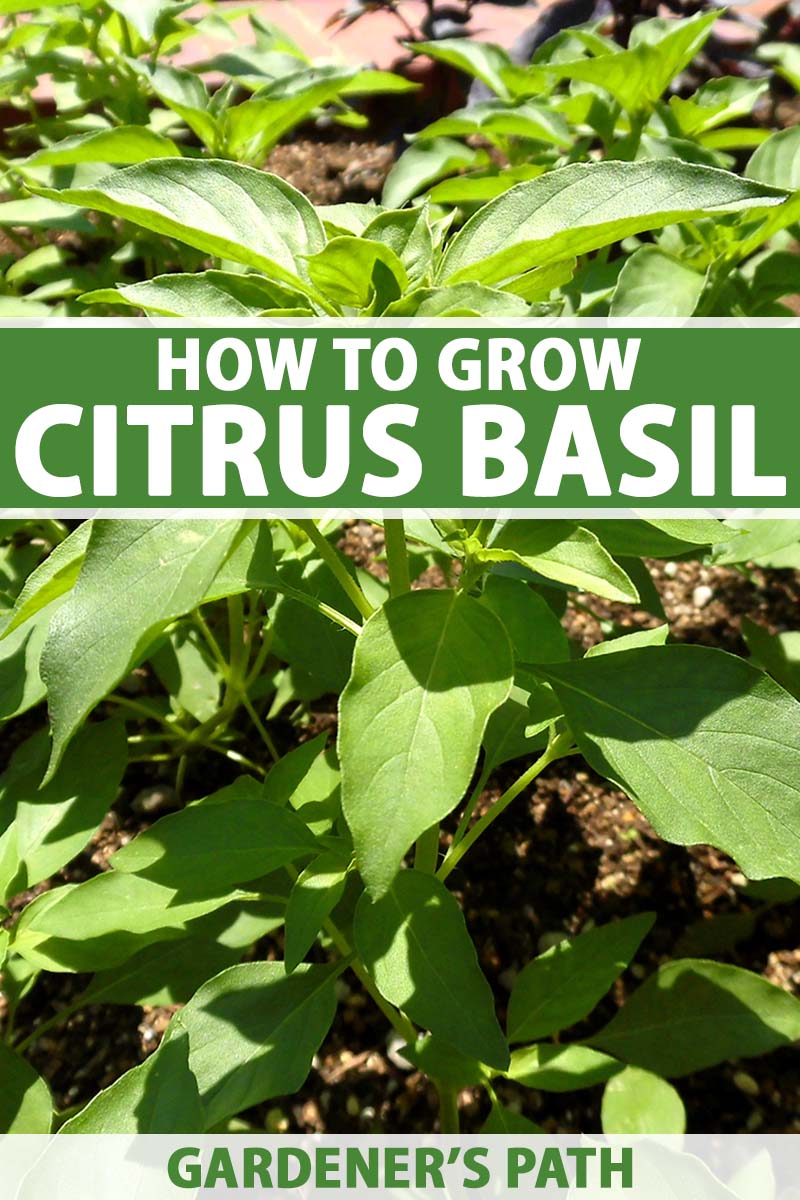
We link to vendors to help you find relevant products. If you buy from one of our links, we may earn a commission.
Cooks the world over favor this garden-grown herb for grilling, Mediterranean and Asian dishes, fish, citrus sorbets, and myriad other tasty treats.
I like to use leaves from my favorite, lemon basil, to add zip to a Caprese salad or to garnish frozen lemonade concoctions, with or without added spirits.
If you’ll follow along, I’d like to tell you some more about these special members of the mint family, and share some growing tips and cooking ideas.
Here’s what to expect:
What You’ll Learn
What Is Citrus Basil?
Identifying citrus basils is simultaneously simple and complicated.
Let’s begin with an overview. In the broadest terms, all of these plants are members of the Ocimum genus, and they belong to the mint family, Lamiaceae.
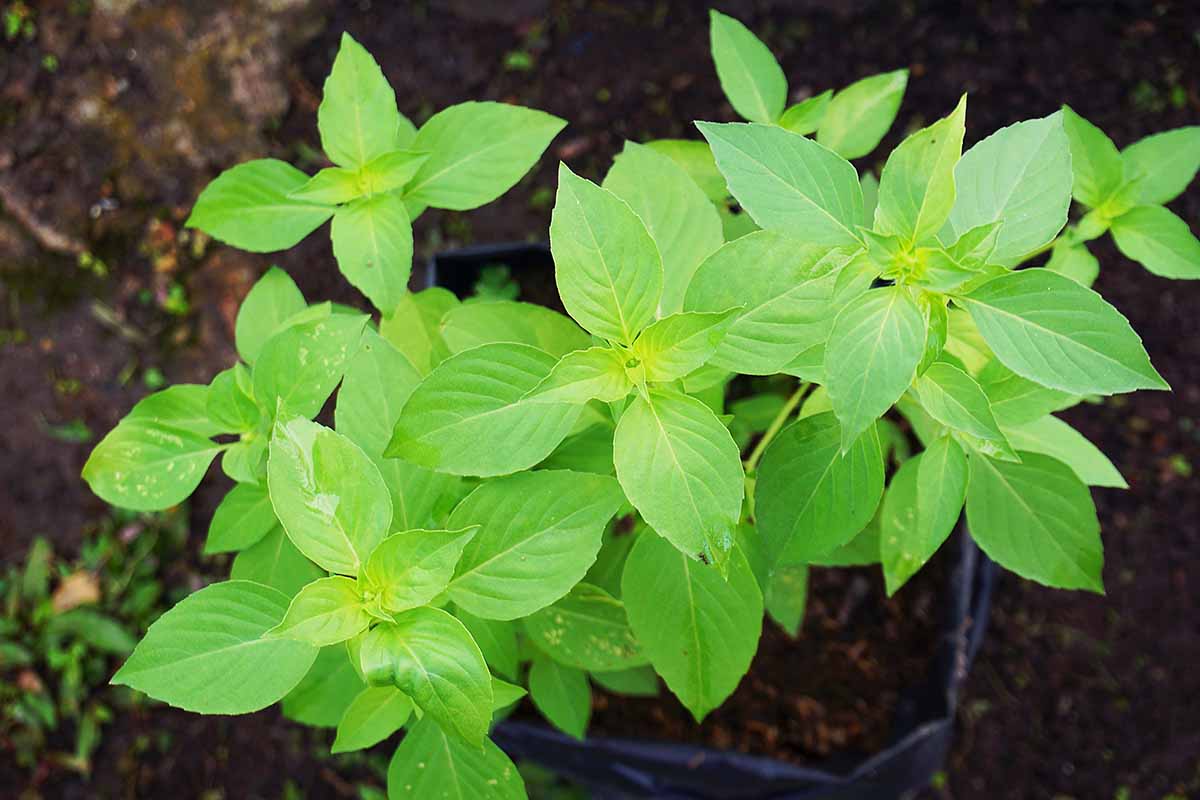
Though not all species belonging to this family are edible, I’ll take it as a decent hint that this herb will be tasty since the mint family also includes culinary delights such as rosemary, sage, thyme, and spearmint.
All basils are annuals that can be grown as perennials in Zones 9 to 11.
But most gardeners will agree it’s best to grow these herbs as annuals, since the leaves taste far better when the plants are young and before they have flowered.
They grow quickly, reaching full maturity in 40 to 70 days, depending on the variety.
You can also grow them as microgreens that are ready for harvest in 14 to 21 days, and you can begin harvesting leaves when a plant has at least four sets of true leaves.

Each of the herbs commonly referred to with the “citrus basil” moniker has a touch of lemon or lime flavor that may range from subtle to predominant.
The flavor of the leaves and the aroma of the blooms are critical qualifications we gardeners and home cooks may use to identify these plants!
Several different plants are included here, and there are conflicting opinions regarding which taxonomic classification applies to a couple of these.
The lemon types are typically considered hybrids of sweet (O. basilicum) and American basil (O. americanum).
Some use the name O. x citriodorum while others, such as the experts at the Missouri Botanical Garden, quarrel with that classification, calling it “an unresolved name of questionable validity.”
Synonyms for O. x citriodorum include O. × africanum and O. citriodorum.
‘Sweet Dani’ is a popular hybrid cultivar with an intense lemony flavor. Read more about how to grow ‘Sweet Dani’ in our guide.
And some lemon cultivars are often referred to as varieties of O. basilicum species, notably ‘Mrs. Burns’ Lemon.’
Lime or hoary basil is usually classified as O. americanum or O. americanum var. americanum, but you may see plant tags with O. x citriodorum or O. basilicum for these herbs as well!
Their flavor tends to be less intense than the lemon varieties, and the plants are a bit smaller, usually topping out at about a foot tall.
There is also one citrusy type with just a hint of lemon taste and aroma amidst the flavors of vanilla and other spices.
That one, ‘Blue Spice,’ is sometimes considered an O. basilicum cultivar, but may also be labeled as O. americanum basilicum, as it is a hybrid cross of O. basilicum and O. americanum.
If you’re finding it tough to distinguish the Latin names, I encourage you to focus instead on the pure joy growing citrus basil can provide, instead of its botanical name.
Each of these plants will grow in containers, attract pollinators, and feature in many types of cuisine. They all contain lots of essential oil, which makes them a nice additive to potpourri.
Just being able to crush a leaf or flower in your fingers to release the scent is a summer delight.
With those alluring goals in mind, let’s hit the high points of how to grow and care for these herbs.
Propagation
Citrus basil is cultivated much like other varieties.
Height and maturity rates may differ from those of other varieties, but the growing requirements for lemon and lime varieties are similar to those of other sweet and Thai types.
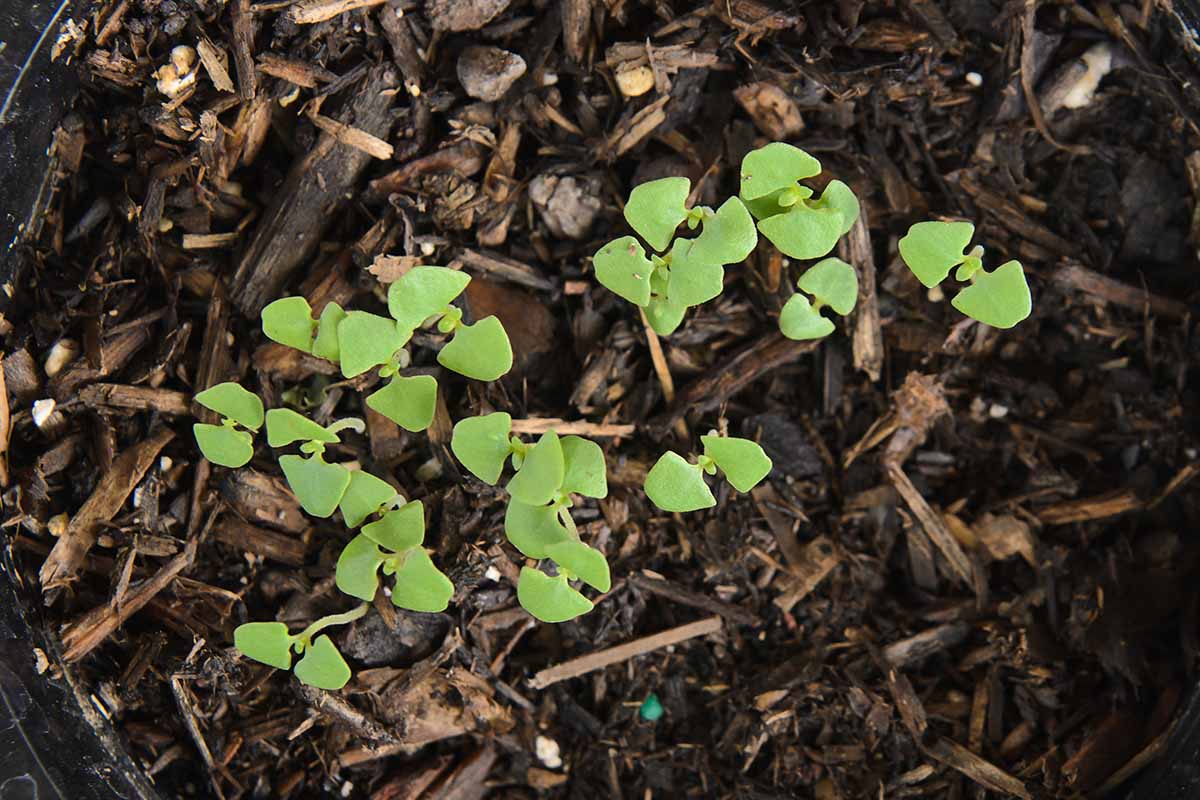
You can readily start these herbs from seed or by rooting cuttings. You may want to start the seeds indoors to get a jump on the season.
I recommend using biodegradable seed-starting cells for sowing seeds indoors, since this plant dislikes having its roots disturbed and can suffer transplant shock.
Biodegradable 1.5-inch pots made from recycled paper are one environmentally friendly option.
They’ll hold young seedlings until they’re a couple of inches tall, and then the bottoms detach so you can plant the rest of the pot directly into a container or garden without disturbing the roots.
These pots are available from Botanical Interests in 12-packs with a tray.
Sow seeds outdoors only after all danger of frost has passed and nighttime temperatures stay reliably above 50°F.
Bury them half an inch deep and space them 10 to 12 inches apart, and they should sprout in seven to 14 days.
You can find complete propagation instructions in our guide.
How to Grow
Plant in full sun for bushy plants with plenty of leaves to harvest. They can get by with part shade, but your plants will become straggly and they won’t produce as much edible foliage.
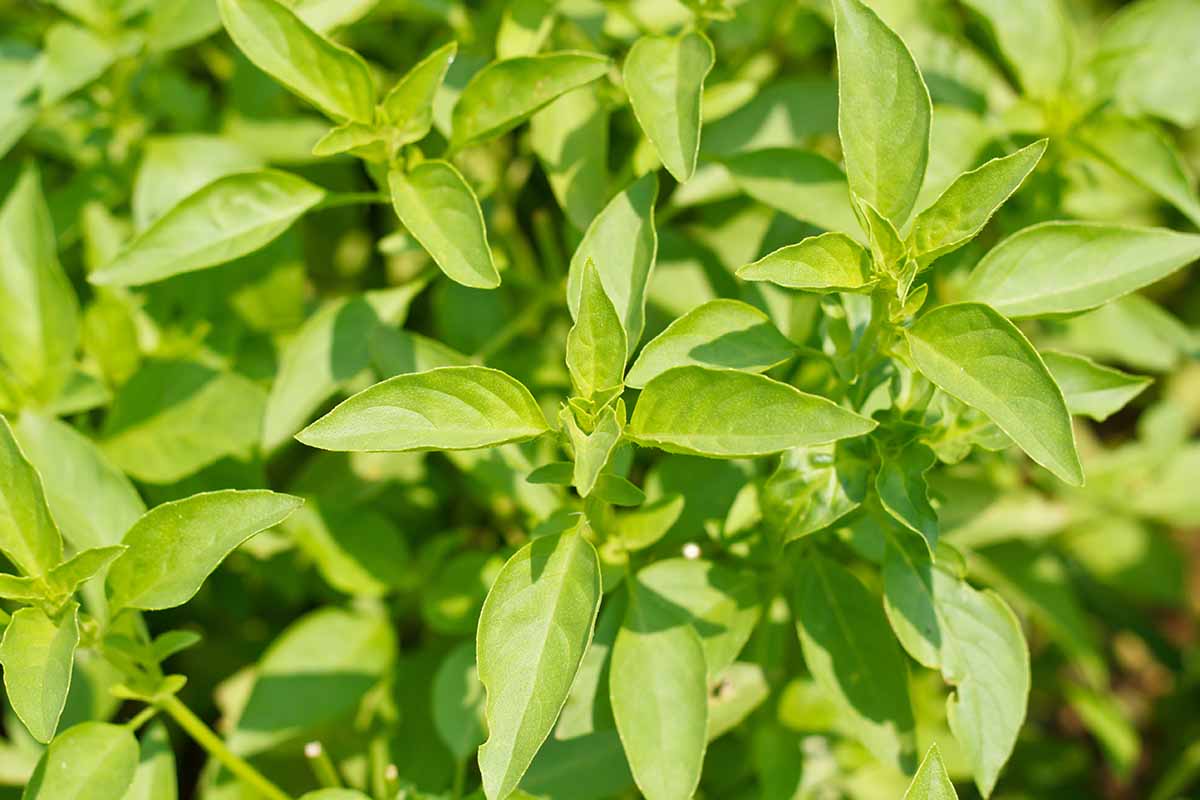
Some herbs can tolerate poor soil, or they may thrive in sandy loam.
But citrus basils are like their O. basilicum relatives, thriving in moist, well-draining soil amended with plenty of composted organic matter.
They also appreciate a soil pH between 6.0 and 7.5, which you can check with a soil test.
Basils thrive in moist but not wet conditions. They do not like wet feet, so don’t plant them anywhere water collects, and always provide proper drainage for plants grown in containers.
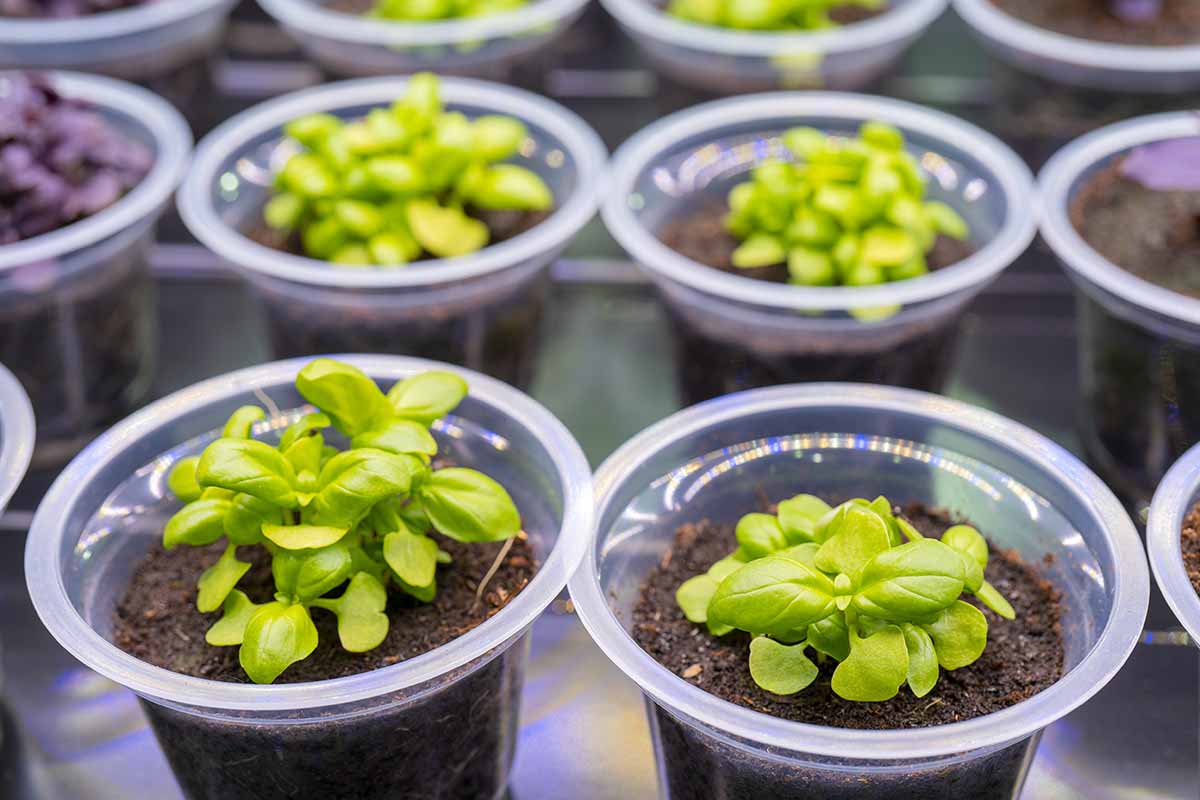
After the plants have reached a couple of inches tall, apply a two- to four-inch layer of mulch around the root zone to retain moisture.
Also, be sure to monitor their water intake throughout the summer, supplementing rainfall as needed.
Check how much precipitation your garden receives each week with a rain gauge, and aim to provide about an inch to your plants.
They can do without supplemental fertilizer if you start with nutrient-rich loam, but the plants will grow even more vigorously if you apply a balanced fertilizer once a month throughout the growing season.

Jobe Organics Granular Fertilizer
One good option is Jobe’s Organics granular fertilizer for herbs, available in four-pound bags via Amazon.
If you do opt to grow this tangy herb indoors or in the home garden, look at our sweet basil growing guide for step-by-step instructions that take you from sowing or transplanting through harvest and preserving.
Growing Tips
- Choose a full sun to part shade location.
- Ensure that soil is organically-rich and well-draining.
- Provide plants with an inch of water per week, in the absence of rain.
Where to Buy
Citrus basils aren’t particularly common. If you can find transplants at a local nursery, seeds are available to you, or if a friend has a mature plant you can take cuttings from to propagate at home, go for it!
When shopping for seeds or live plants, expect most citrus selections to simply be called “lemon” or “lime” basil.
An O. basilicum lemon variety known for its pronounced flavor and aroma that grows just eight 16 inches tall and spreads 20 inches wide is available from Botanical Interests in packets of 240 organic seeds.
Botanical Interests also offers a blend of six types of organic basil seed including ‘Cinnamon,’ ‘Dark Opal,’ ‘Genovese,’ large leaf, lemon, and lime.
Burpee sells a variety described simply as “lemon basil.” It’s a bit more compact, growing 12 to 18 inches tall and spreading eight to 10 inches.
Burpee’s lemon basil is available in 200-seed packets or as part of a mix-and-match set of three live plants.
Burpee’s mild-flavored lime basil grows taller, reaching 16 to 24 inches and spreading eight to 10 inches. It’s available in 600-seed packets.
Want More Options?
You can learn more about the varieties available to grow at home in our guide to the best types of citrus basil.
Harvesting
Even if you aren’t going to cook with the leaves, snip the plant tips regularly using your fingers or clean scissors.
Consistent clipping will encourage the plant to fill out. It also discourages blooming, which causes the leaves to develop a bitter taste.
If your plants do flower, you can also harvest and save the seeds.
Of course, I can’t imagine why you wouldn’t want to cook with your harvest!
Recipes and Cooking Ideas
The sprightly, tangy flavor boosts dishes both sweet and savory, and the leaves or sprigs also make an attractive, tasty garnish.
They have a more intense flavor than your typical homegrown sweet basil, so you may need to adjust the amount you use in Caprese salads, pesto, calzone fillings, and the like, so they won’t be overpowering.

I usually use about a third of the amount I would if I were cooking or garnishing with a sweet variety.
When the recipe also includes lemon or lime juice or zest, I will increase the amount of citrus basil I use and cut back on the citrus called for in the recipe.
I like to throw just a handful of citrus basil into a pesto recipe in place of an equal portion of sweet leaves from another variety like ‘Prospera,’ for example, and then eliminate a little of the lemon juice I’d usually add.
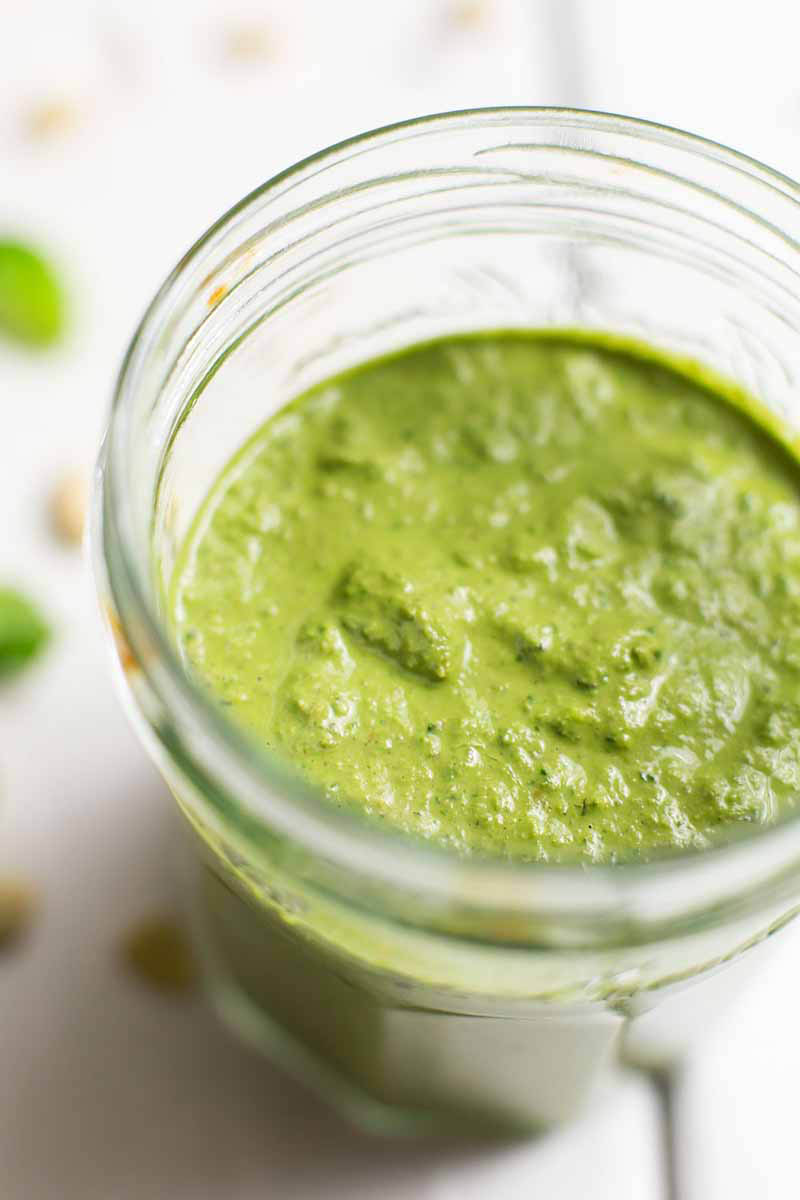
If you don’t already have a favorite recipe, consider swapping a cup of the lemon or lime variety for half of the sweet basil called for in this vegan pesto recipe from our sister site, Foodal.
These tangy herbs can also replace a portion of the basil and a bit of the lemon juice or zest in recipes like this one for orzo pasta salad, also from Foodal.
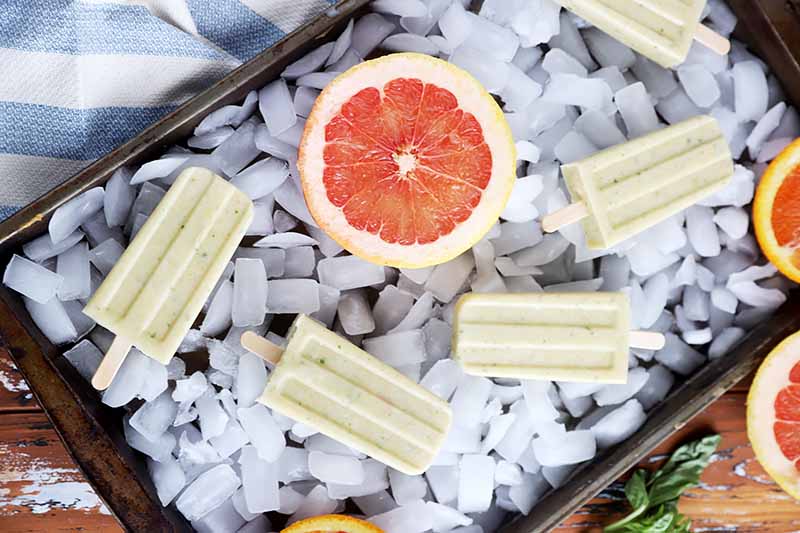
A chiffonade of fresh leaves is a natural choice in dreamy honey basil creamsicles as well. If you’re looking for a sweet treat, find the recipe now on Foodal.
You can also use fresh-picked blossoms to garnish lemon sorbet and Mediterranean lemon soups, or as a flavor boost in any number of stir-fries or salads.
Do a taste test often the first time you cook with this flavorful herb so the citrusy tang is to your liking without overwhelming the flavor of the other ingredients.
Lemon or lime basil is also tasty in Thai-inspired dishes like curries, or it may be used in place of the cilantro in this shrimp pad Thai recipe from Foodal.
Pick up some more cooking ideas in our guide to growing and caring for Thai basil in the garden.
Our guide to freezing fresh herbs for storage also has instructions for preserving, if you’re interested.
Quick Reference Growing Guide
| Plant Type: | Perennial herb, grown as an annual | Water Needs: | Moderate |
| Native to: | Asia | Tolerance: | Moist soil |
| Hardiness (USDA Zone): | 4-9a (annual), 9b-11 (perennial) | Maintenance: | Low |
| Season: | Summer | Soil Type: | Organically rich, loamy |
| Exposure: | Full sun | Soil pH: | 6.0-7.5 |
| Time to Maturity: | 40-70 days | Soil Drainage: | Well-draining |
| Spacing: | 6-12 inches | Companion Planting: | Cilantro, chamomile, chives, marigolds, parsley |
| Planting Depth: | 1/4 inch (seeds) | Avoid Planting With: | Bay, rosemary, sage |
| Height: | 8-30 inches | Family: | Lamiaceae |
| Spread: | 6-12 inches | Genus: | Ocimum |
| Common Pests and Disease: | Aphids, Japanese beetles, slugs, snails; damping off, fusarium wilt | Species: | Africanun, americanum, basilicum, x citriodorum |
A Plant with No-Squeeze Citrus Basil Flavor
In addition to their value as culinary herbs, citrus basils scent the summer air, attract pollinators, and they can even make appealing indoor plants in winter.
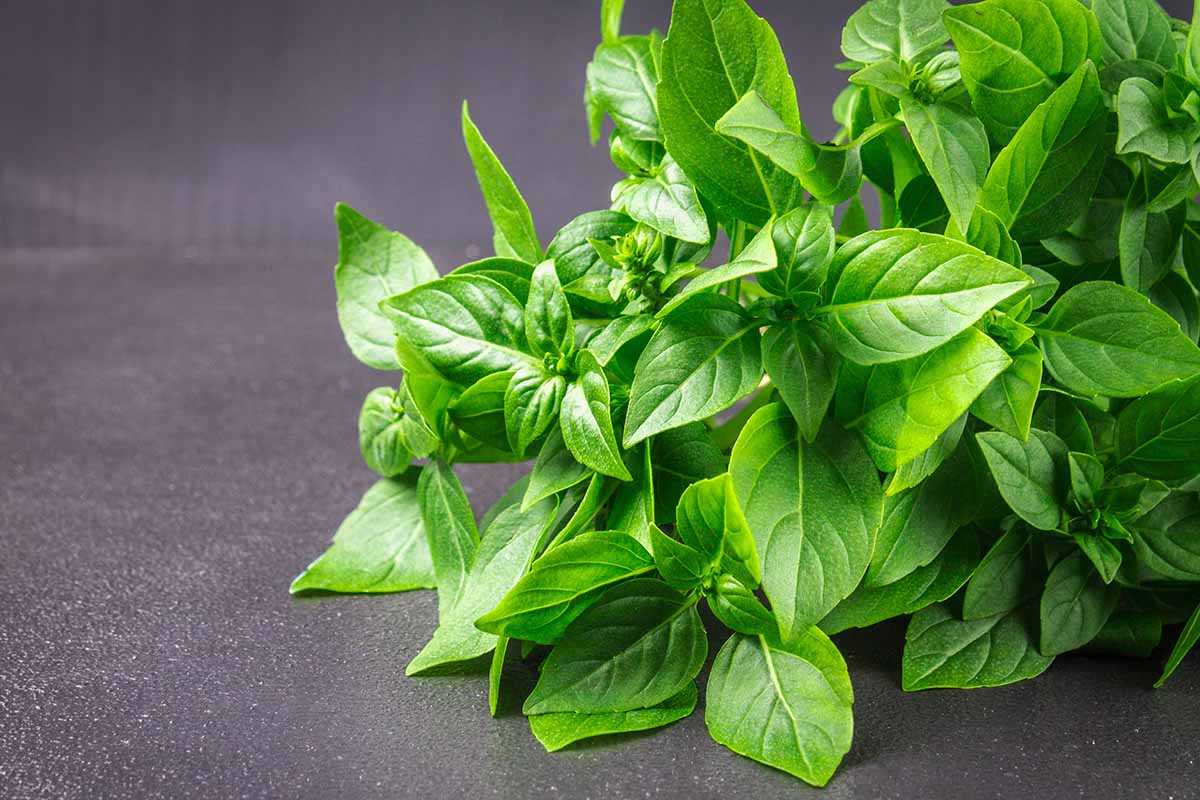
Do you have a favorite variety or a fresh idea for enjoying citrus basil? Be sure to share your experience or questions in the comments section below.
And whether you’re already an avid herb gardener or still a newbie, these basil guides offer even more valuable growing information you can use:
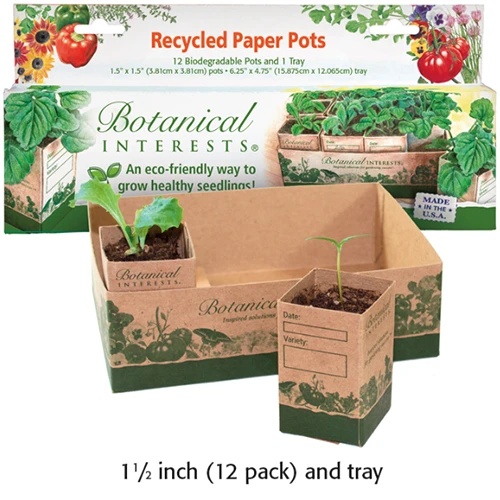
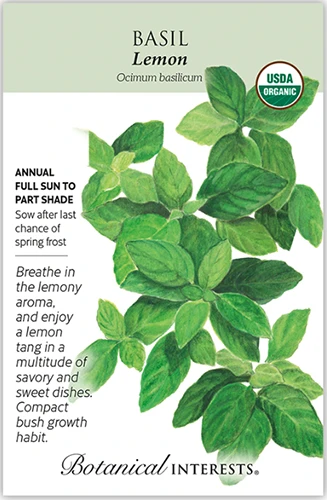
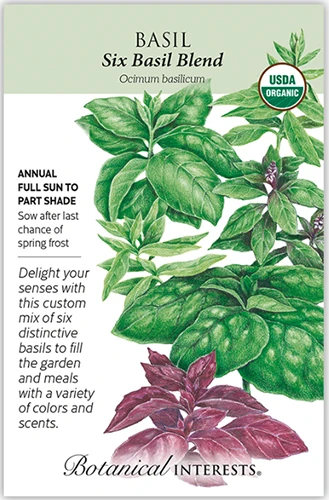
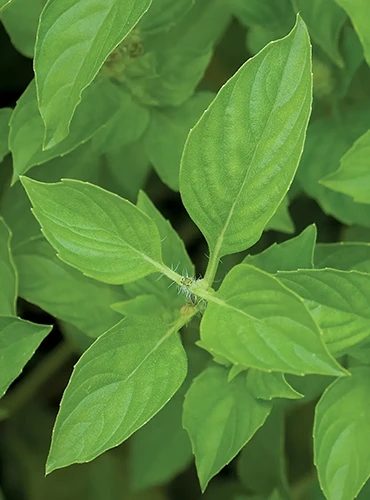

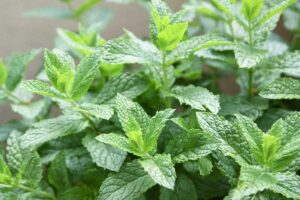

Thanks for giving this information, keep it up